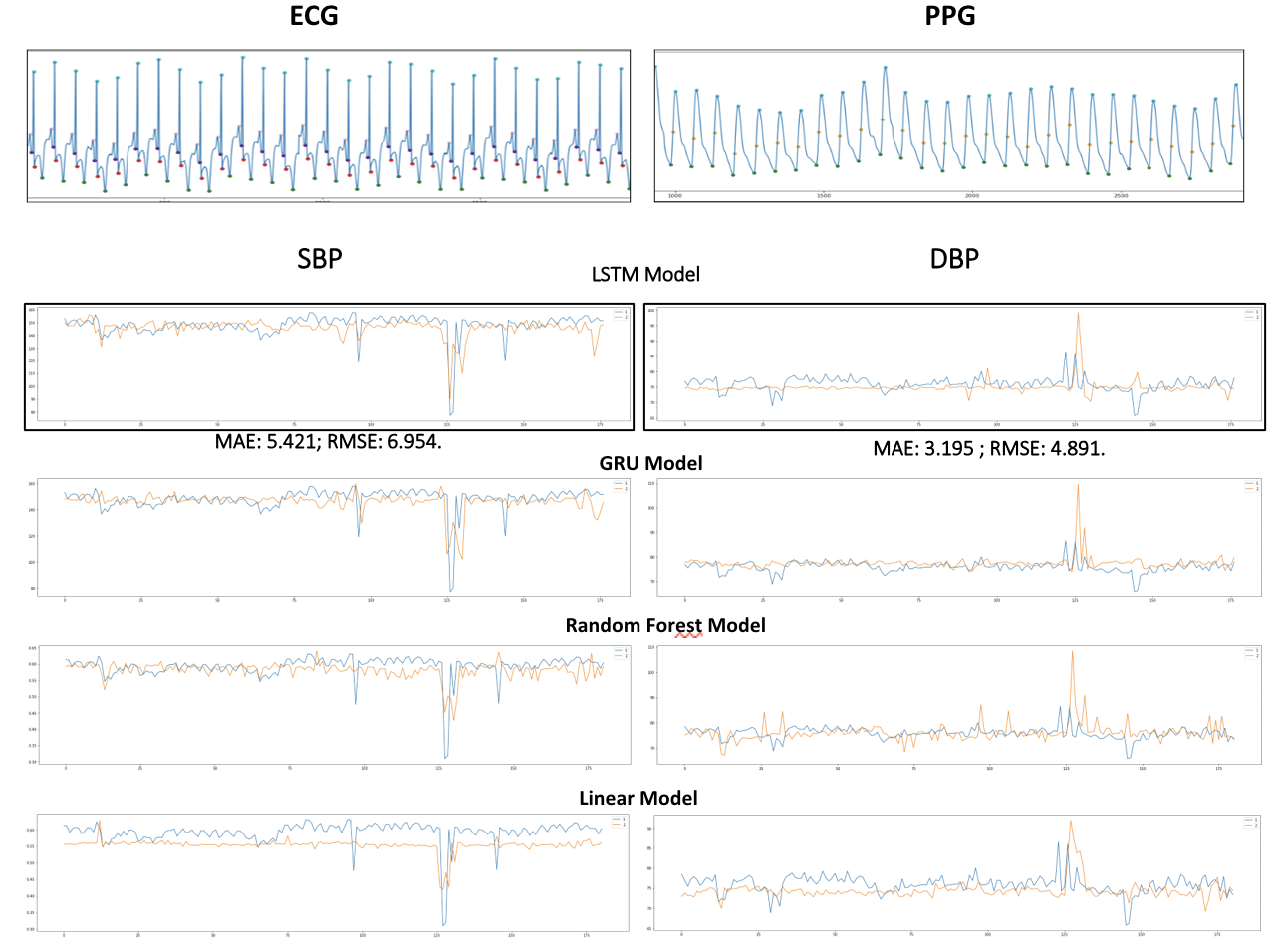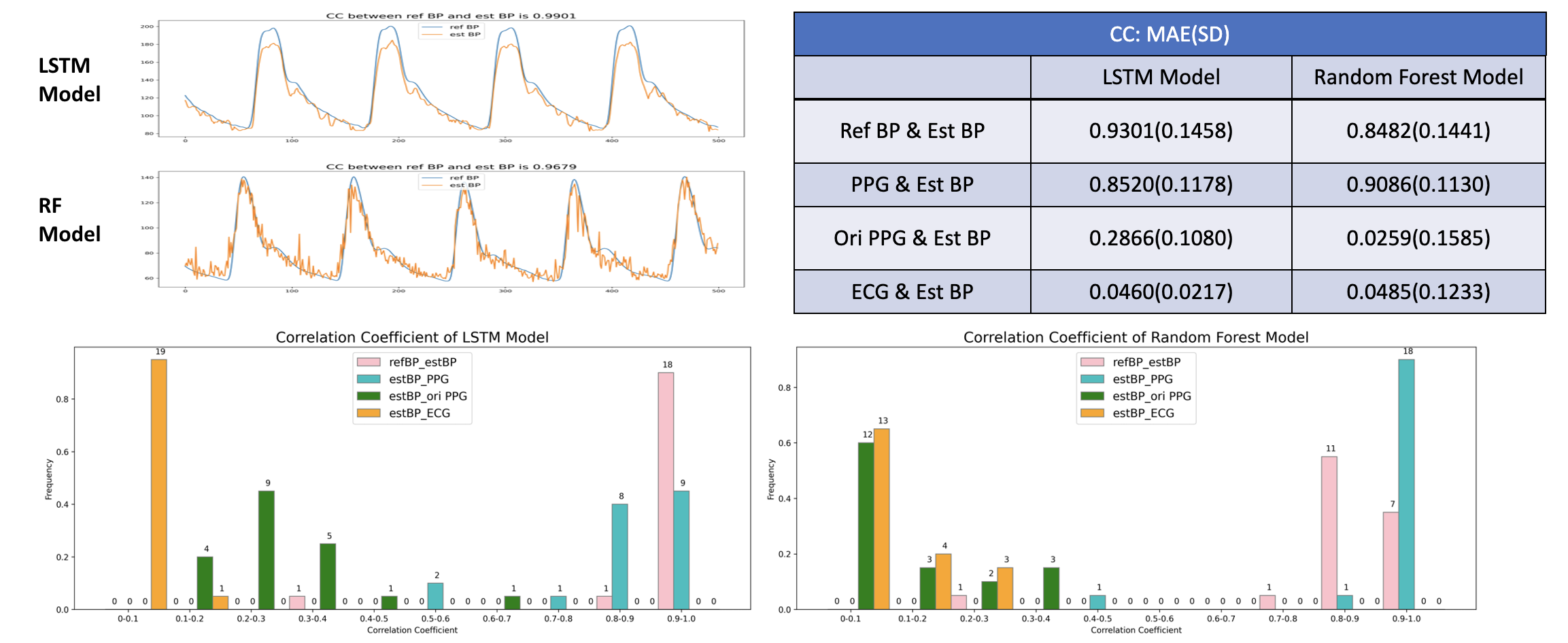Cuffless Blood Pressure Estimation using PPG and ECG
Date:
This research marked a significant milestone in my transition from Nursing to Biostatistics, as it introduced me to the world of signal processing and machine learning for disease estimation. I am deeply grateful to Prof. ZHANG for his invaluable guidance and patience throughout this project. My work during this period encompassed three main components:
- Replicating Research on Blood Pressure Estimation: In this part, I focused on replicating a paper that used machine learning models to estimate blood pressure (BP) based on photoplethysmogram (PPG) and electrocardiogram (ECG) signals. My tasks included:
- Data Preprocessing: I worked with a dataset of 600 patients from the MIMIC-II database.
- Feature Extraction: I extracted 13 essential features from the PPG and ECG signals, including pulse transit time (PTT), various amplitudes (T-wave, Q-wave, R-peak, S-peak, Low-peak), QRS intervals, R to low-peak amplitudes, R-peak intervals, PPG pulse amplitude, PPG pulse width, PPG high to low interval, and PPG slope change standard deviation.
- Machine Learning Models: I applied several machine learning models in BP estimation, including Long Short-Term Memory (LSTM), Gated Recurrent Unit (GRU), Random Forest (RF), and Linear Models. Notably, the LSTM model outperformed the others.

- Investigating the Relationship Between PPG, ECG, Reference BP, and Estimated BP:
- I utilized LSTM and Random Forest (RF) models for estimating blood pressure waveforms.
- I calculated the correlation coefficient (CC) for Reference BP & Estimated BP, PPG & Estimated BP, and ECG & Estimated BP.

- Optimal Feature Set for Blood Pressure Estimation:
- I Conducted a review of a published article: Beat-to-beat continuous blood pressure estimation with optimal feature set of PPG and ECG signals using deep recurrent neural networks.
- I performed statistical analyses in this article.

 U of Minnesota
U of Minnesota